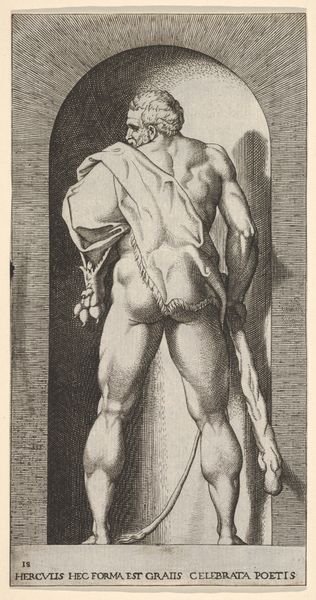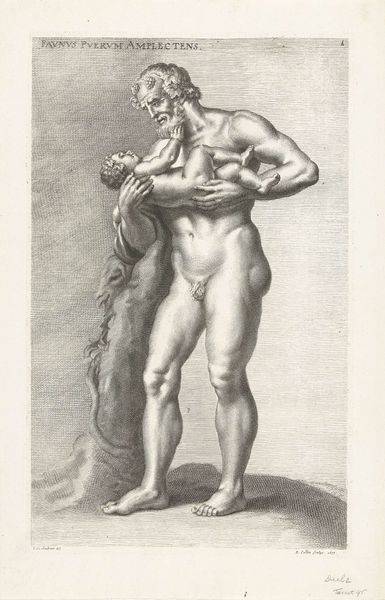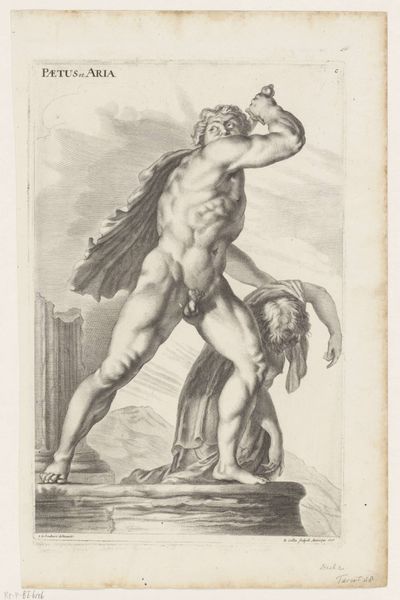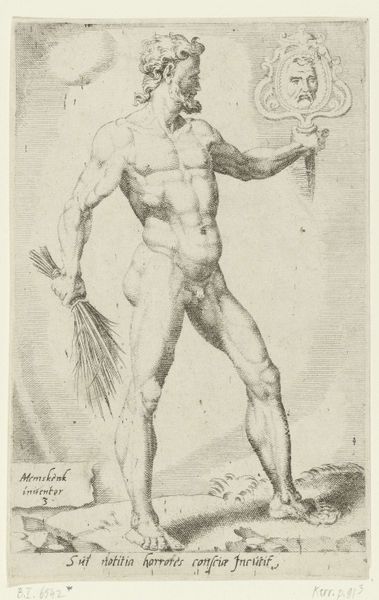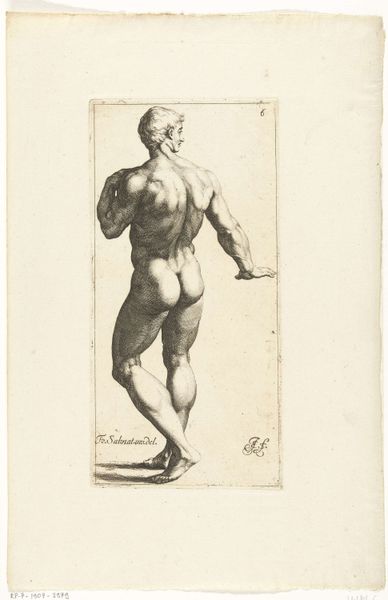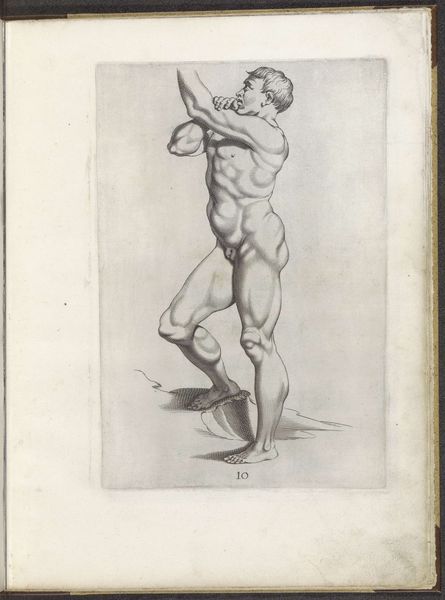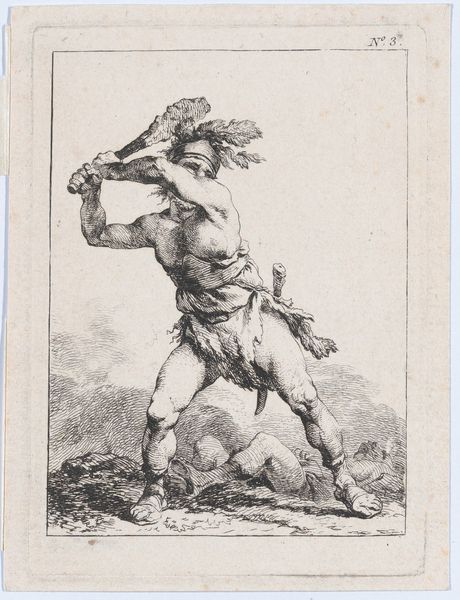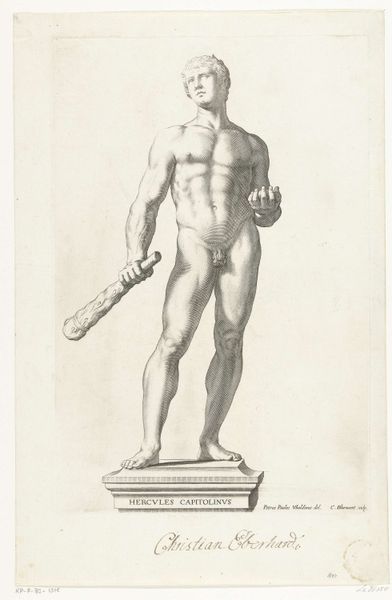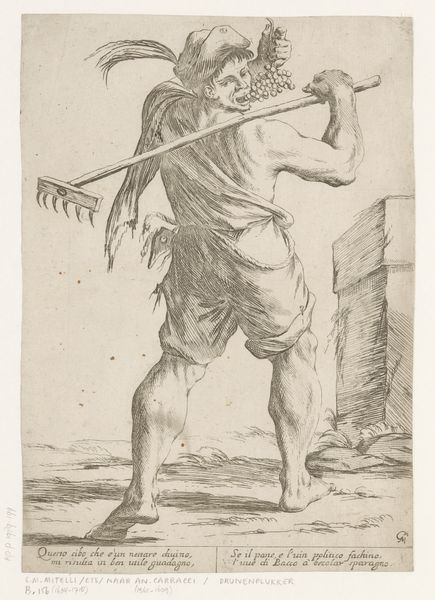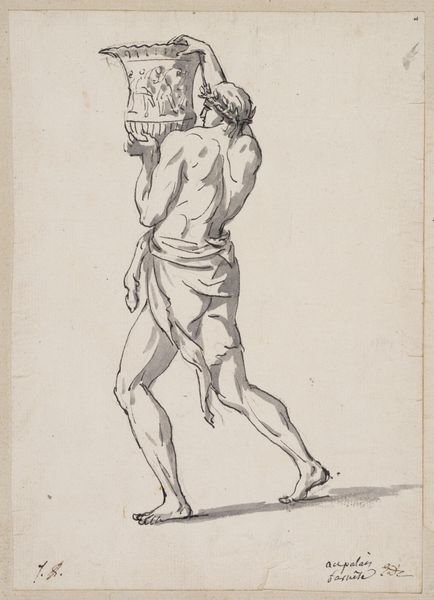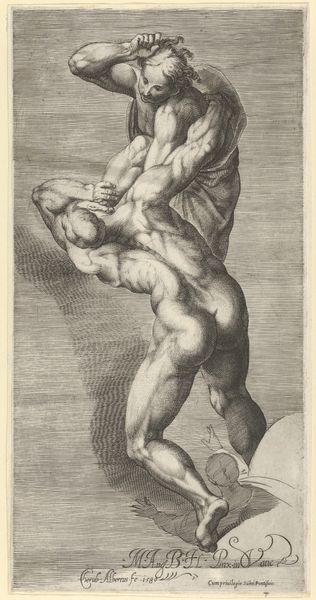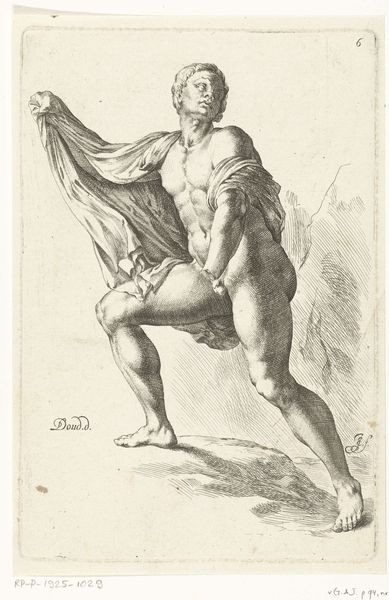
engraving
#
baroque
#
nude
#
engraving
Dimensions: height 215 mm, width 140 mm
Copyright: Rijks Museum: Open Domain
Curator: Here we have "Man die met een bundel takken slaat," an engraving created between 1668 and 1671 by Jan de Bisschop. Editor: It has a brutal energy. The way the figure is poised, back to us, muscles tensed, it feels like a moment captured right before impact. The bundle of sticks becomes a weapon, a symbol of potential violence. Curator: Bisschop’s work engages with the prevailing artistic currents of his time, specifically the Baroque style with its focus on dynamism and dramatic action. However, viewing it now, it raises questions about how we represent masculinity, particularly physical strength and its potential for aggression, within systems of power. What statements is he trying to make with this male nude subject matter? Editor: The male nude as a symbol carries a lot of weight, especially during that era. The Baroque period often idealized the male form to project power and authority, connecting to classical ideals of heroism and strength. The sticks... they’re so rough and natural in contrast to the smooth, almost polished rendering of the body. They amplify the suggestion of imminent harm, but they also symbolize rustic or agrarian labor. Maybe he’s expressing frustration over the natural constraints. Curator: That’s a compelling contrast. We might also think about how ideas of race intersect. This representation of idealized male strength was inherently tied to conceptions of European masculinity, often contrasted against racialized “others.” The question becomes, what power does this kind of ideal exert on the viewing experience itself? And what kind of message about race, body image, and control of power does the image impart? Editor: Power seems intrinsic to how Bisschop composed the whole image. Think about what happens psychologically when we’re forced to only view a subject’s back: our own feelings of insecurity, powerlessness, curiosity, or even distrust surge up in different combinations. His action also mirrors so many symbols tied to violence, perhaps to purify, reform, punish, or defend oneself. Curator: Indeed. Bisschop encourages us to look critically at representations of power, both past and present. Editor: The artwork remains a poignant exploration of strength, aggression, and the symbols of dominance and what might challenge it.
Comments
No comments
Be the first to comment and join the conversation on the ultimate creative platform.
